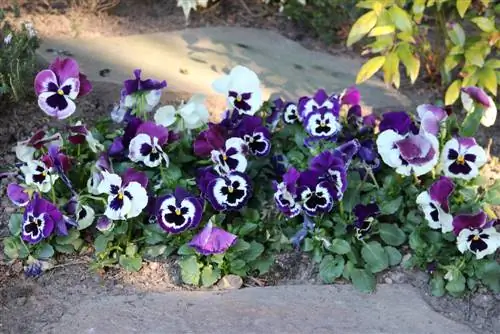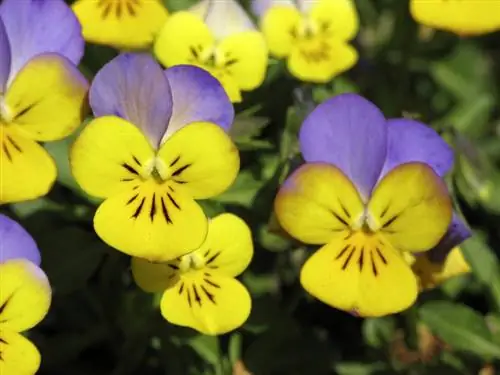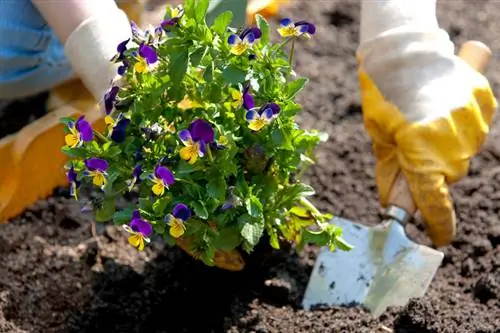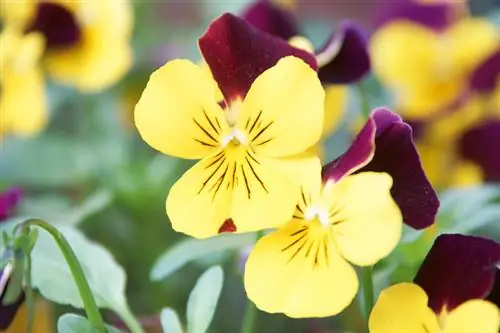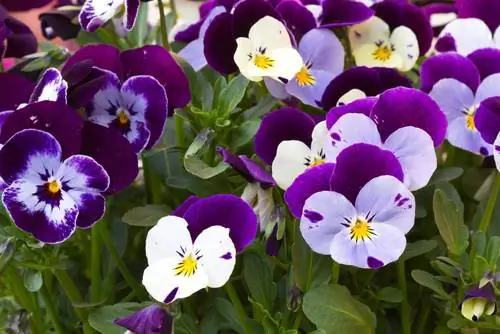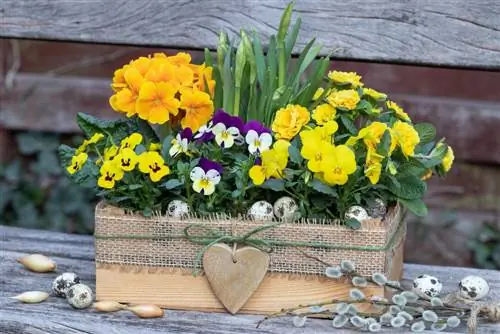- Author admin [email protected].
- Public 2023-12-16 16:46.
- Last modified 2025-01-23 11:22.
After a long and dreary winter, in spring it will be time to start planting new graves. Easy-care and lushly blooming spring bloomers, such as the tried and tested horned violet, are particularly suitable. The robust plant blooms colorfully and can be easily combined.
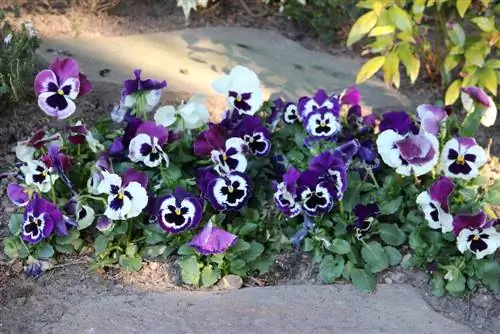
Are Horned Violets suitable for grave planting in spring?
The horned violet is ideal as a grave plant in spring because it is easy to care for, robust and available in many colors. It can be planted from March and combined with spring bloomers such as daisies, ranunculus or daffodils.
Is the horned violet a suitable grave plant in spring?
In fact, the horned violet is one of the most beautiful types of flowers for a grave planting in spring. The robust and easy-care plant blooms in many different colors - in addition to single-colored ones, there are also numerous multi-colored varieties - and also tolerates late frosts very well. Properly cared for, the mountain flower will show off its blooms well into early summer.
The horned violet can also be combined very well with other spring bloomers, so that you can always create creative and attractive spring plantings - without too much effort.
When can you plant horned violets in the cemetery?
As a rule, horned violets are planted directly on the grave from March onwards. At this point, the flowers are available in stores as already blooming container products and can be placed outside without further winter protection.
What is less known is that the two-year-old horned violets - grown from seeds or sown directly on site - can also be planted out in autumn. The flowers initially grow in a creeping manner and only form the characteristic bush with flower stalks in spring.
How do I care for horned violets?
Horn violets are also so popular as grave plants in spring because they bloom, are robust and absolutely easy to care for. When planting, you should add some compost (€10.00 on Amazon) and horn meal so that the flowers are sufficiently supplied with nutrients to get started. Alternatively, you can also use a liquid fertilizer for flowering plants. Further fertilizer applications are not necessary.
If you cut away the dead flowers regularly, the flowering period will extend into early summer. You can also cut the flowers completely short, then a second flower bloom will develop.
Can I also plant horned violets in a pot?
Many people today prefer a simpler grave instead of a high-maintenance grave site, on whose often narrow plate only a few flower pots can be placed. Horned violets are just as suitable for this as for direct grave planting - the popular flowers can be cultivated very well in pots. In this case, make sure to use a high-quality compost-based substrate and to fertilize and water the plants regularly.
Which combinations of flowers are recommended?
Horn violets are extremely versatile for grave planting in spring. They can be planted as a group - for example in many different flower colors. But they are also well suited for association with other spring bloomers such as
- Daisies (Bellis)
- Ranunculus
- Hyacinth
- Daffodil
- Pansies
- Forget-me-not
- Tulip
- Primrose
- crocus
Make sure that the different species match not only in terms of color, but also in their special needs in terms of soil and location.
Tip
What are the differences between pansies and horned violets?
Pansies and horned violets look very similar. In fact, both flowers belong to the violet genus (Viola), but belong to different species. The flowers of horned violets are significantly smaller than those of pansies, and horned violets are also considered to be less sensitive and more robust to cold and other adverse weather conditions.

